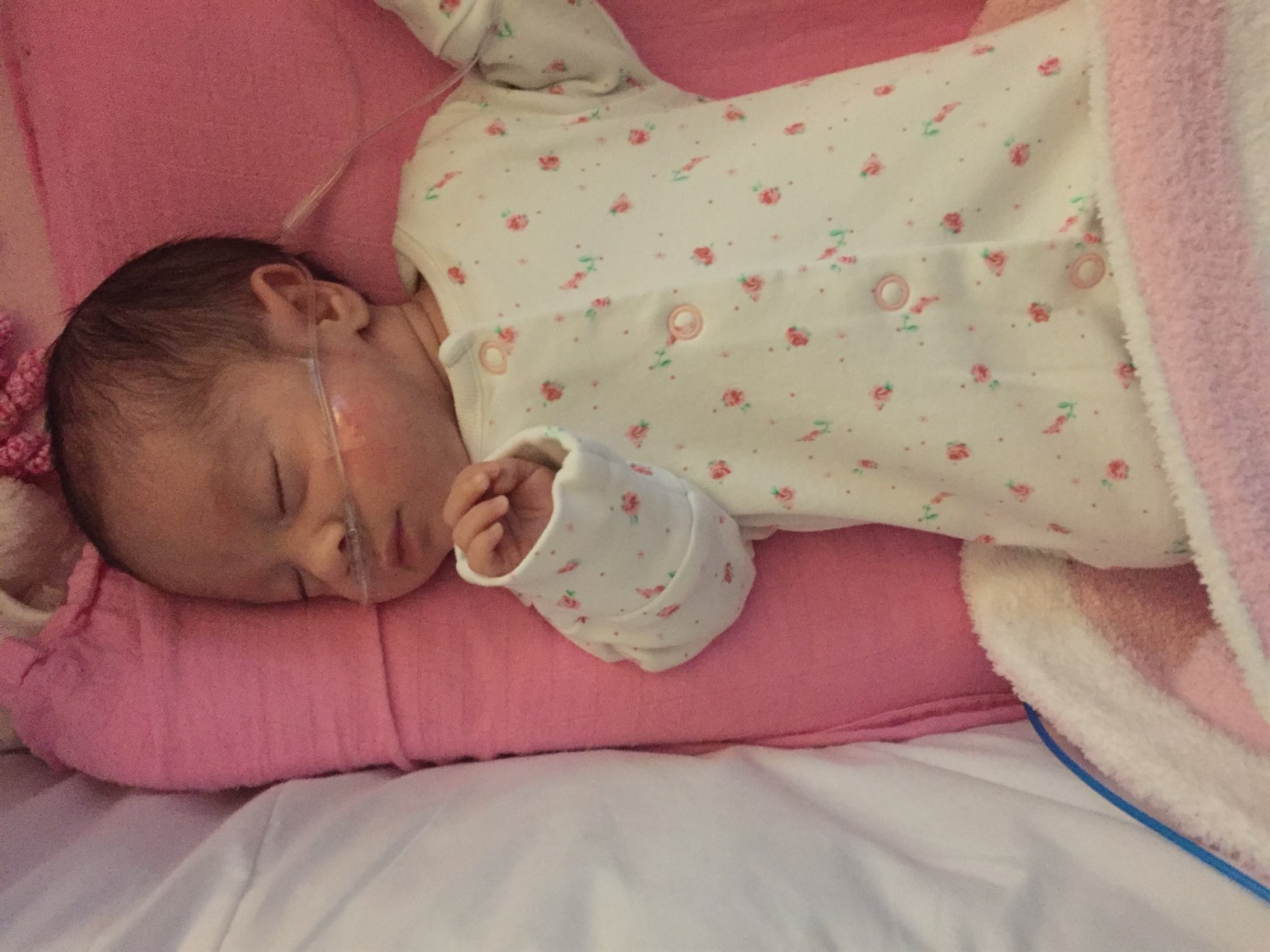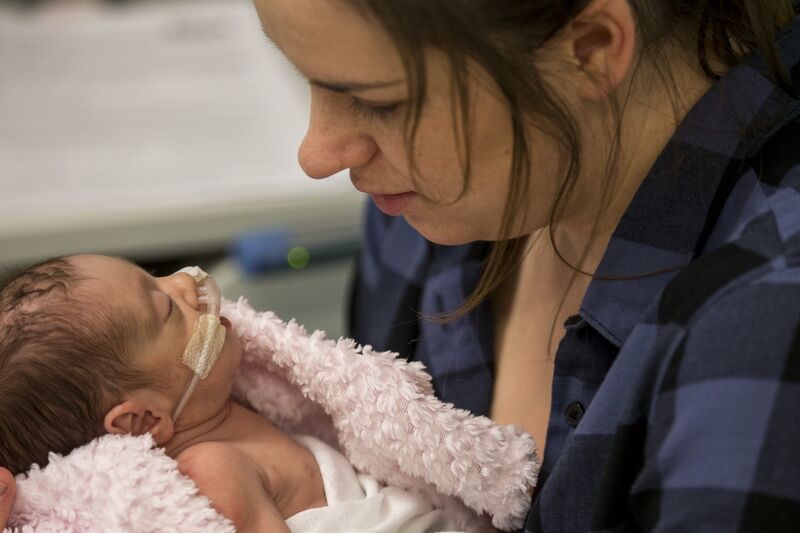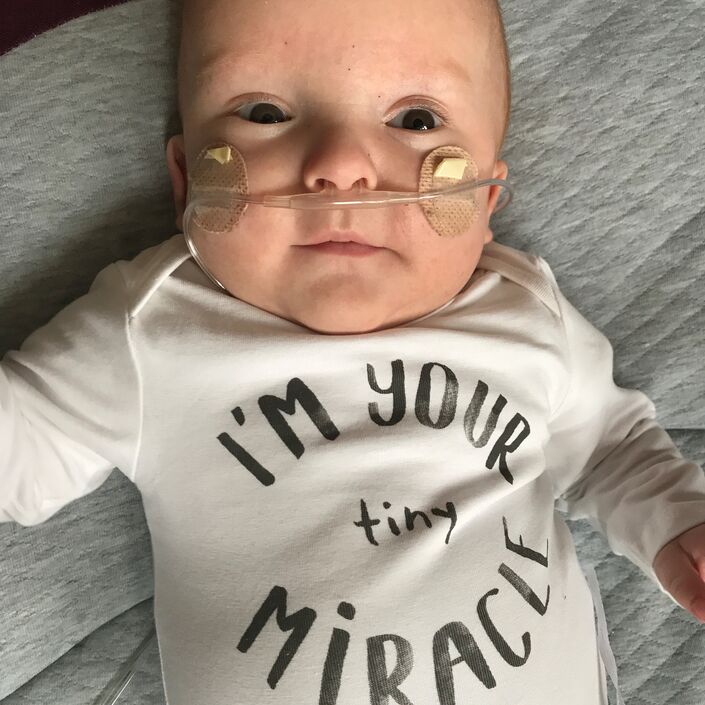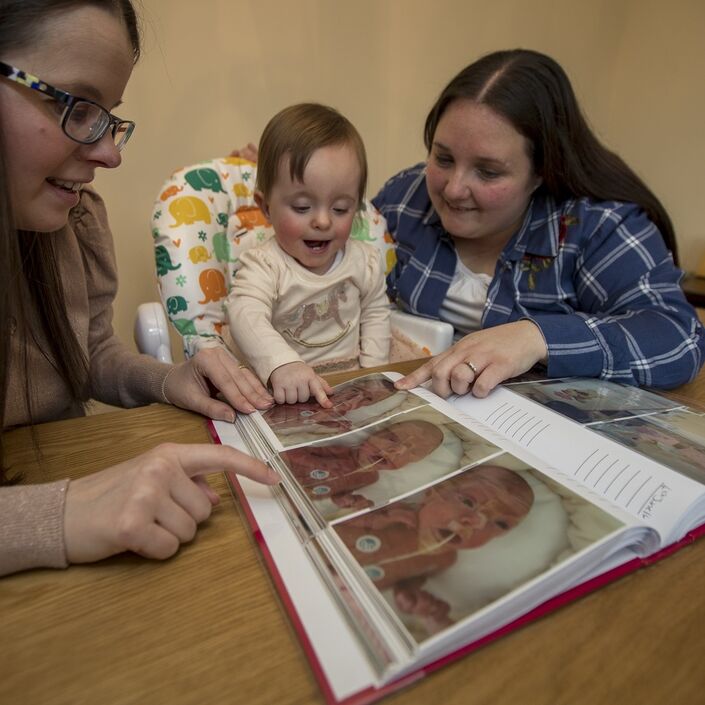Like all premature babies, Holly’s start was a tough one, but one that would define her as strong and unbelievably resilient.
The waters surrounding Holly broke at 19 weeks, which for the vast majority of babies would mean being born within a matter of days or hours, and would have given Holly a zero percent chance of survival. Doctors were sure that this meant a non-viable pregnancy and recommended we act accordingly – but Holly’s heartbeat was strong and we could feel her moving. We were determined to give Holly a chance, no matter how small. The only hope was for strict bed rest and a lot of luck. Both were needed, and both were had.
We had numerous scans to keep an eye on her, and to measure any fluid that she accumulated. Holly decided that at 28 weeks she was ready to arrive. As a direct result of not having waters, an infection developed in the womb, but the doctors were quick to act and opted for an emergency caesarean. When Holly was born she received intervention from a well-trained team of doctors and nurses who saved her life and did everything humanly possible to keep it that way. She weighed 1kg (2lbs and 3.5oz).
Holly was discoloured and had major swelling on one side from the lack of waters, as well as the defining and lasting symptom of chronic lung disease – something that was inescapable despite any and all efforts due to losing my waters at such an early and important stage of lung development.

Unlike Holly’s big sister Katie, Holly was unable to have immediate skin-to-skin contact with her parents and had to be kept in an incubator to maintain her body temperature and prevent any germs from getting to her. Cradling her head and feet (containment holding), through panels in the side of the incubator, were all we were allowed for what felt like forever. Holly had several ‘lines’ put in her to feed her and deliver a wide array of drugs, antibiotics and minerals for her to live. At this point she has already been labelled as feisty by the doctors as she repeatedly kicked them off her while they were desperately trying save her life (kids eh?).
Holly was on a ventilator for her to breathe as she had underdeveloped lungs – this is extremely invasive and caused her much discomfort. She would occasionally try to cry and couldn’t for the tube running down her voice box into her lungs.

Over the following months there was a long running process of breathing development. Even though Holly was premature we still believed that when everyone said it was two steps forward and one step back, it wouldn’t apply to our child – we were wrong.
Holly had jaundice and received photo-therapy for a couple of days, but that was small in comparison to everything else she endured.
She moved from the ventilator to BiLevel positive airway pressure (BPAP) after six days and then onto continuous positive airway pressure (CPAP) after another week or so. On Christmas Day we were told she could go onto high flow – this was a huge step. Sadly she just wasn’t ready yet and got too tired trying to breathe with the lesser support. She was moved back to CPAP, and there she stayed for a long time.
At five weeks old, Holly contracted sepsis and had to be re-intubated, meaning she was back to using the ventilator again. We didn’t realise at the time how serious this was, Holly needed constant medical intervention. Without it, there is no doubt she wouldn’t have survived. Thanks to the fast actions of the medical team and Holly’s undeniable strength, she pulled through and was back on track to progress.

During her time in the neonatal intensive care unit (NICU), Holly had hundreds of blood tests, a handful of brain scans, chest scans, four invasive eye examinations, six blood transfusions, treatment for a heart problem… the list goes on.
Every line or cannula that came out was a victory.
Every progression of breathing apparatus a step closer to home.
The normal things most babies have, like the first time she had a cuddle with Mum or having a bath, was sticker and picture worthy.
The line of family relatives that would patiently wait just to meet her even though they weren’t allowed to touch her was heart-warming.

The nurses and support staff that cared for Holly day in and day out were amazing and the really special ones did little (yet huge) things that you might not expect, like talk or sing to them and hold them if they were unsettled. This was incredibly reassuring for us as parents, knowing when we had to go home to sleep that she was being looked after so well.
The doctors were efficient and battle hardened. That’s a good thing. Especially when they are dealing with so many struggling babies at the same time. The veins they had to find and hi-jack were no wider than hairs and often failed or collapsed and so often took many attempts.
The consultants were clearly respected by all staff and made the hard decisions that meant they had final responsibility over everything, and didn’t let it faze them. Even the cleaners were trained to the highest standards.
Holly spent just under 11 weeks (75 days) in hospital and went home with her big sister sat next to her in the car, who insisted on holding her hand the whole way. Since coming home she has been making up for the lost time in the first few weeks and spends most of her days laying on our chests - it’s perfect. Holly has chronic lung disease, and has oxygen support at home, but the doctors are confident she will outgrow this.
Holly has pulled through what is undoubtedly the hardest thing any person can go through and is still fighting. No matter what hardships the future holds, she has already proven she can beat all of it.

If you have been affected by any of the issues mentioned in this post and would like support, view our online support pages.


